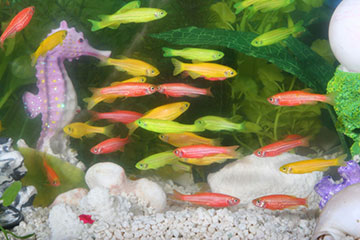In our quest to feed our children healthy food, keep away from dangerous cancer-causing chemicals, and fight off the hundreds of toxins our bodies are exposed to every day, one must start at home by avoiding the consumption of Genetically Modified Organisms and limiting our exposure to toxic cosmetic products.
Industry advocates of GMO’s liken the process to selective breeding. But in selective breeding for example, a farmer may choose to breed a small mare with a large male horse to produce a medium-sized horse. GMO’s, or Genetically Modified Organisms, work in a similar, but much more dangerous way. Genetically modified organisms deal with modifications that would otherwise not occur naturally in a particular plant or animal. Instead of selectively breeding animals for size or cross-pollinating plants for naturally occurring traits like mildew resistance in peas, scientists are adding traits from other plants and animals to their genetic code—like adding arctic fish genes to give tomatoes and strawberries tolerance to frost. Others, such as spider genes are inserted into goat DNA, so that the goat milk will contain spider web protein for use in bullet-proof vests. Sounds like something out of Frankenstein, right? Well, it is and that’s the reason other countries have completely banned GMO’s altogether. The rate of allergies skyrockets when GMO’s are ingested. The fish, in the picture below, were genetically modified to glow in the dark.

GloFish fluorescent fish. Genetically modified. Courtesy of Wikipedia. www.glofish.com, Hoffmeier.
Did you know that a majority of farmers have been converting to genetically modified corn, soybeans and cotton since 1996? These GMO varieties are better resistant to herbicides and insects, therefore producing a larger crop and a higher return on investment. In a sample taken from farmers from across the U.S. between 2000-2011 by USDA’s National Agricultural Statistics Service, 81-86 percent of all corn planted acres, 87-90 percent of all soybean planted acres, and 81-93 percent of all upland cotton planted acres (depending on the year) were genetically modified in the U.S.
The problem is this: we don’t know the long-term results of eating these genetically modified plants or animals, and we are being given no choice as consumers in taking that risk. Until more research is done, it is up to health conscious consumers to decide whether that risk to themselves and their children is worth it. That’s where organic food comes in. Organic food cannot be genetically engineered. So, when you buy an organic chicken, you know it didn’t EAT genetically engineered feed (or the chicken itself doesn’t have something like dog DNA in it). We’re talking mad science here!
To learn more about GMO’s, check out this article. GMO’s and You, an Interview with Jeffrey Smith
The Non-GMO Project is committed to listing food products that do not use GMO’s in their production.
If you have a smartphone … there is an app for that! You may download the Non-GMO Project application from the app store or by clicking here: Non-Gmo Project App for Iphone so that when you’re out shopping, you can quickly check on the foods you would like to purchase.
AND for those of you who are baffled by the ingredients list on the back of your lotion, makeup, and deodorant sticks, here’s a website that reveals the level of toxicity in your everyday cosmetic products. You’ll find a grade for overall hazard, development and reproductive toxicity, cancer rating, and allergies and immunotoxicity levels.





















































Thank you so much for this information. I have recently been diagnoised with cancer and are now seeing the effects of all the poison in our enviroment. This post has helped me see what is healthy for me and my family. Thank you a farmgirl in Kuna, ID